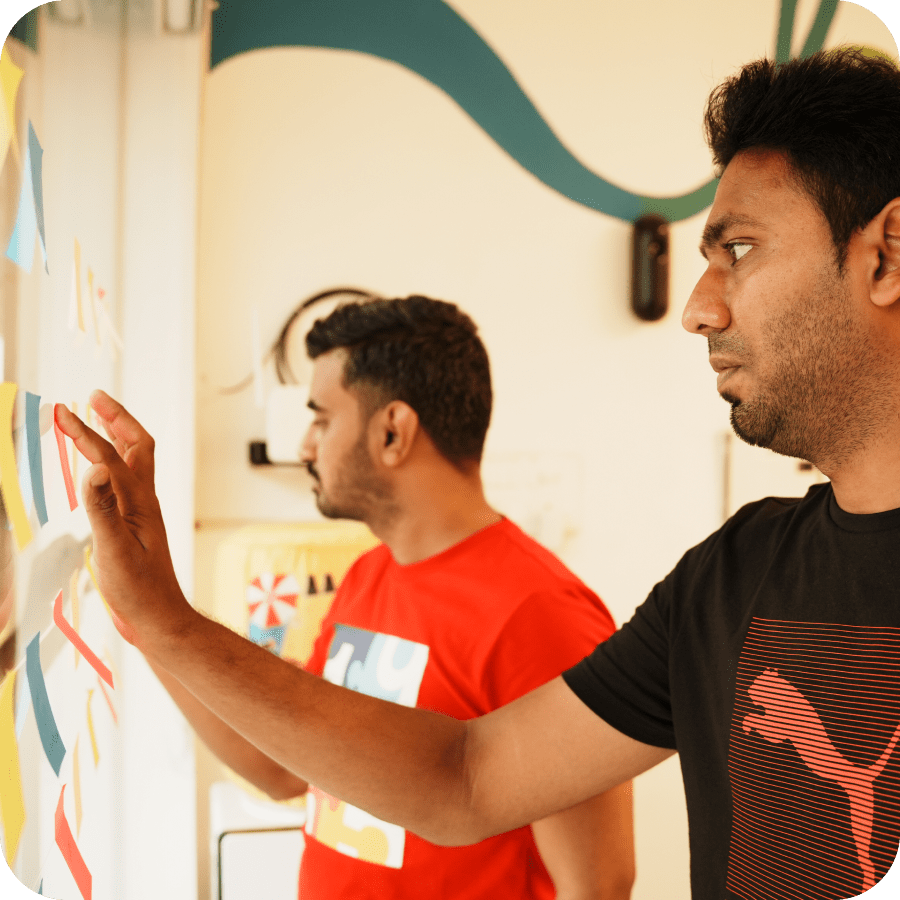Unlock the Potential of Your product’s Digital Experience
Our Design Audit service offers a comprehensive evaluation of your digital product's design to identify areas for improvement and provide actionable recommendations






What is a Design Audit?
A design audit is a systematic and objective evaluation of an organization's design practices, assets, and overall design strategy. It involves assessing various aspects such as visual aesthetics, user experience, brand consistency, usability and accessibility.
Why do you need
a Design Audit?
The primary objective of a design audit is to identify gaps between the current design implementation and desired goals.
Enhancing User Experience
Enables businesses to gain a deeper understanding of how their design impacts the user experience.
Identification of Design Gaps
By conducting a Design Audit, you can identify gaps and weaknesses in your current design practices.
Streamlining Design Processes
It enables streamlining of design workflows, leading to increased productivity and cost-effectiveness.
Driving Innovation
It acts as a catalyst for innovation, unlocking new possibilities and differentiation in the market.
When should I perform Design Audit?
By understanding when to initiate a design audit, businesses can effectively leverage its insights to drive positive transformation and growth.

By understanding when to initiate a design audit, businesses can effectively leverage its insights to drive positive transformation and growth.

 Pre-Launch Evaluation
Pre-Launch Evaluation
Conduct a design audit before launching a new product, service, or major design initiative.

 Periodic Review
Periodic Review
Implement regular design audits at specific intervals to maintain design excellence and align with evolving business goals.

 Redesign or Rebranding Initiatives
Redesign or Rebranding Initiatives
When planning a major redesign or rebranding effort, it is essential to conduct a design audit as a preliminary step
Process of Design Audit
The process of evaluating and analyzing design practices and assets.
1. Define Audit Objectives
Begin by establishing clear goals and objectives for the design audit. Determine what aspects of design you want to evaluate.
2. Assess Design Assets
Evaluate the existing design assets, including visual elements, user interfaces, brand materials, and documentation.
3. Evaluate User Experience
Assess the user experience of products, services, or interfaces associated with the design assets.
4. Identify Areas for Improvement
Based on the findings of the design audit, identify specific areas that require improvement or optimization.
Do you want to build
your product in 6 months?
Contact Us

Interesting Trivia about Design Audit
It empowers organizations to assess and improve design practices, leading to enhanced user experiences.

It empowers organizations to assess and improve design practices, leading to enhanced user experiences.

 Competitive Edge
Competitive Edge
Design Audits enable organizations to differentiate themselves from crowd by identifying design opportunities.

 Risk Mitigation
Risk Mitigation
A Design Audit helps mitigate potential risks associated with design, such as legal and compliance issues.

 Alignment with Industry Standards
Alignment with Industry Standards
A Design Audit helps you benchmark your design practices against industry standards and best practices.

 Continuous Improvement
Continuous Improvement
A Design Audit fosters a culture of continuous improvement by providing valuable feedback and insights.
